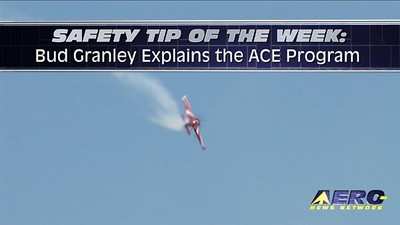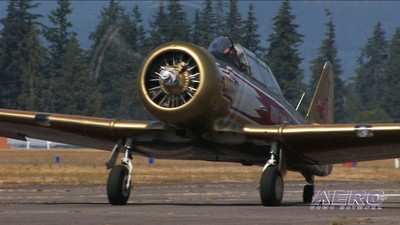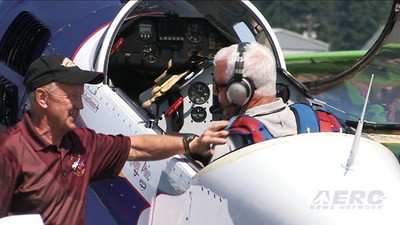Tue, Mar 23, 2010
Safety has always been a vital priority to the International
Council of Airshows (ICAS), both for air show performers and air
show attendees. The backbone of ICAS’ safety initiatives is
the Aerobatic Competency Evaluation (ACE) program.

Administered by a seven-member ACE Committee comprised of Greg
Poe (acting chairman), Bob Carlton, Bud Granley, Mark Proulx, Gene
Soucy, Greg Koontz, and John Mohr, the ACE program sets the
standards for evaluating aerobatic competence. In cooperation with
the Federal Aviation Administration (FAA) and Transport Canada, the
ACE program is able to issue a Statement of Aerobatic Competency
for air show pilots who perform aerobatics both in U.S. and
Canadian air shows.

Established during the late 1980s, the ACE program’s
original intention was to merely provide check rides for ICAS
members seeking the Statement of Aerobatic Competency; however, in
1992, after a series of discussions between FAA and industry
representatives, the FAA issued authorization allowing ICAS and EAA
(Experimental Aircraft Association) to administer the Aerobatic
Competency Evaluation Program.

As John Cudahy remarked in a 2004 Aero-News Network article,
"The program is essentially based on a single, very logical
concept. Experienced air show pilots are better equipped to judge
good and bad aerobatic pilots than FAA inspectors with little or no
aerobatic experience. The acknowledgement of this basic fact in
1992 has likely saved dozens of lives in the twelve years that have
passed since."

That tradition continues today; the ACE program aims at
identifying the minimum standards, rules and regulations by which
evaluations are conducted, and the necessary qualifications for
both ACE evaluators and air show pilots. Aerobatic competency must
be renewed each year through completion of both a flight and ground
session. In addition to the established flight standards, ACE
pilots are expected to follow a Code of Ethics conducting
“himself or herself in a manner that reflects on the
professionalism of the airshow industry and the integrity of the
ACE program.” ICAS estimates that its ACE evaluators are
responsible for certifying approximately 90% of today’s
aerobatic pilots.
More News
Light Gun A handheld directional light signaling device which emits a brilliant narrow beam of white, green, or red light as selected by the tower controller. The color and type of>[...]
"The journey to this achievement started nearly a decade ago when a freshly commissioned Gentry, driven by a fascination with new technologies and a desire to contribute significan>[...]
Aero Linx: JAARS, Inc. For decades now, we’ve landed planes on narrow rivers and towering mountains. We’ve outfitted boats and vehicles to reach villages that rarely se>[...]
"Our driven and innovative team of military and civilian Airmen delivers combat power daily, ensuring our nation is ready today and tomorrow." Source: General Duke Richardson, AFMC>[...]
Aircraft Conflict Predicted conflict, within EDST of two aircraft, or between aircraft and airspace. A Red alert is used for conflicts when the predicted minimum separation is 5 na>[...]
 ANN's Daily Aero-Term (04.20.24): Light Gun
ANN's Daily Aero-Term (04.20.24): Light Gun Aero-News: Quote of the Day (04.20.24)
Aero-News: Quote of the Day (04.20.24) ANN's Daily Aero-Linx (04.21.24)
ANN's Daily Aero-Linx (04.21.24) Aero-News: Quote of the Day (04.21.24)
Aero-News: Quote of the Day (04.21.24) ANN's Daily Aero-Term (04.21.24): Aircraft Conflict
ANN's Daily Aero-Term (04.21.24): Aircraft Conflict






